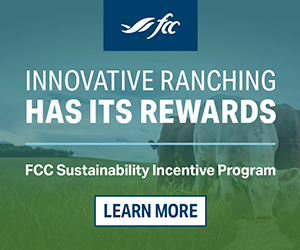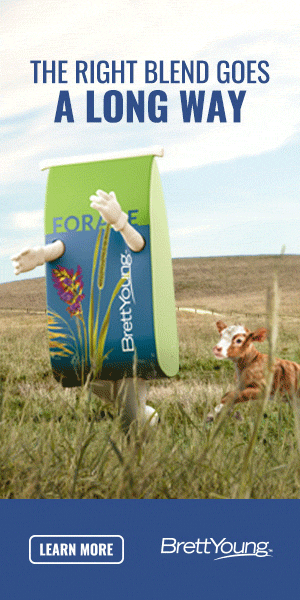AB Direct - Steers
Rail: ---
AB Direct - Heifers
Rail: ---
US Trade- Steers
Rail: 360.00 (IA)*few
US Trade - Heifers
Rail: 360.00 (IA)*few
Canadian Dollar
0.10
Management considerations for grazing in a drought
If you are in the Canadian cattle industry right now, you are well-aware of the severity of drought conditions that exist across much of western Canada and the United States. Unfortunately, we are at a point where even if the forecast miraculously changed and it rained for a week, it would be too late for many pastures and crops. The intense heat early in the growing season has exacerbated the situation and, in some areas, grasshoppers are moving through in apocalyptic swarms.
VBP+ offers industry-developed quality assurance

The expression “always plan for a drought” is solid advice, however in some areas there has been a form of drought for a couple of years already, and stockpiled feed and forages have run out. Combined with a shortage of rain and dropping groundwater levels, some people are also struggling to provide safe, accessible water to their livestock. In times like these producers are very resourceful and innovative in our approach to feeding cattle, however we need to make sure we are keeping some things in mind in order to maintain the safety and welfare of our livestock and our industry.
Water quality
Testing livestock water is always a good idea, especially if it is a water source that has not been used recently or there has been a significant decline in water levels. There are several labs in Alberta which can analyze water samples for livestock suitability, and online resources which can help you analyze results to determine whether water sources are safe for livestock. See Beef Cattle Research Council’s post for some tips on collecting samples and monitoring water sources.
Poisonous plants
There are a number of plant species in western Canada which are toxic to livestock. Cattle may naturally avoid these in an average production year, however in times of drought they may be looking for anything and everything to eat; consumption of even a single toxic plant can lead to illness or even death. Monitor pastures or fields being grazed, especially areas around dugouts, wetlands and waterways. Examples of poisonous plants in western Canada are water hemlock, tall larkspur, seaside arrowgrass, etc.
Crops and crop residues
If grazing salvage crops or stubble, ensure you are following specified withdrawal times and other instructions for any crop protection products that have been used. Some products have a “safe to graze/harvest” period which needs to be adhered to if the crop is going to be used for cattle or other livestock. There are some products which, if used, will mean that those forages or crops should not be consumed by cattle, EVER. Know when and which crop protection products were used and then consult the product label or an agronomist to determine whether it is safe for cattle.
Feed quality
If you are purchasing or harvesting feed from crops, it is recommended that you feed test and include tests for nitrates which can be common in drought-stressed crops. High nitrate levels do not necessarily mean that the feed cannot be used, but it may need to be blended with other feed sources to reduce overall nitrate levels. Work with your veterinarian or a nutritionist to ensure your cattle are getting adequate nutrition without potential toxins. If purchasing feed, also ask about weeds or poisonous plants that may be in the mix.
Cattle shipping
As always, be cognizant of withdrawal times when shipping cattle. This includes not only veterinary products but also crop protection products, which may become more relevant as we are utilizing crops for feed. Some crop protection products require that animals be removed from treated fields for a specified amount of time before being sold for meat. As we see some cattle being sold earlier than usual, ensure you are meeting all withdrawal times on other products as well.
Times like these encourage us to be innovative and come up with solutions that work for our individual operations. There is no “one size fits all.”
Visit www.verifiedbeef.ca and contact your provincial/regional coordinator for additional resources and information.



